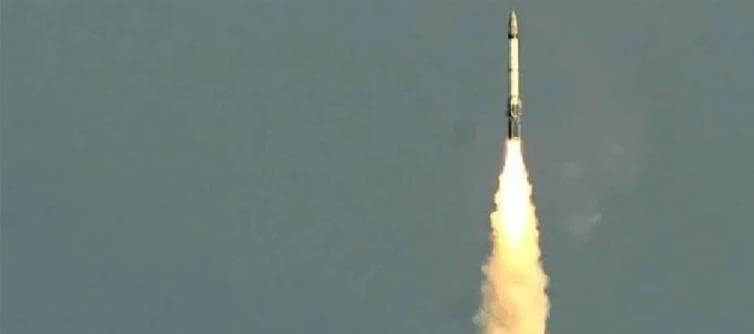
india is prepared to test its K-6 hypersonic missile at sea. The Defense Research and Development Organization (DRDO) is working on this missile, which will be used in India's next S-5 class nuclear submarine. The K-6 intercontinental ballistic missile (ICBM) will outperform the Brahmos missile in terms of speed and range. india will be able to more successfully oppose adversaries like china and pakistan with the aid of this missile.
What is K-6 missile?
The Advanced Naval Systems Laboratory of the DRDO in hyderabad is where the K-6 is being developed. It is among India's most potent and sophisticated missiles. With this hypersonic ballistic missile fired from a nuclear submarine, india will join the world's most capable nations. The K-6 will be fired from S-5 class nuclear submarines, which are bigger and more potent than the current Arihant class submarines. They are being developed to carry missiles and hefty warheads.
How much is the speed of K-6 missile?
The K-6 missile will be capable of reaching hypersonic speeds with the next sea trials. Mach 7.5, or nine and a half times the speed of sound, or 9,200 kilometers per hour, is considered hypersonic. The missile can strike deep into enemy territory in a couple of minutes thanks to its 8,000-kilometer operational range. This missile's hypersonic speed allows it to evade the majority of anti-missile defense systems, leaving adversaries with no time to respond.
What is the USP of K-6 missile?
Multiple Independently Targetable Re-entry Vehicle (MIRV) technology is a feature of the K-6 missile. This will boost a missile's efficacy in both attack and defensive missions by enabling it to precisely target many targets. Both nuclear and conventional warheads that can be employed in a variety of conflict situations can be carried by this missile. Submarine-launched ballistic missiles, or SLBMs, like the K-4 (which has a range of 3,500 km) and K-5 (which has a range of up to 6,000 km), are upgraded to the K-6.
Where will india rank?
It will surpass the BrahMos missile in both speed and destructive power. The K-6 missile will have a diameter of more than two meters and a length of more than twelve meters. Few nations possess or are working on creating sophisticated hypersonic and MIRV-equipped missile weapons. With the successful sea test of the K-6 missile, india will join the ranks of the United States, Russia, china, France, and the United Kingdom.
What is K-6 missile?
The Advanced Naval Systems Laboratory of the DRDO in hyderabad is where the K-6 is being developed. It is among India's most potent and sophisticated missiles. With this hypersonic ballistic missile fired from a nuclear submarine, india will join the world's most capable nations. The K-6 will be fired from S-5 class nuclear submarines, which are bigger and more potent than the current Arihant class submarines. They are being developed to carry missiles and hefty warheads.
How much is the speed of K-6 missile?
The K-6 missile will be capable of reaching hypersonic speeds with the next sea trials. Mach 7.5, or nine and a half times the speed of sound, or 9,200 kilometers per hour, is considered hypersonic. The missile can strike deep into enemy territory in a couple of minutes thanks to its 8,000-kilometer operational range. This missile's hypersonic speed allows it to evade the majority of anti-missile defense systems, leaving adversaries with no time to respond.
What is the USP of K-6 missile?
Multiple Independently Targetable Re-entry Vehicle (MIRV) technology is a feature of the K-6 missile. This will boost a missile's efficacy in both attack and defensive missions by enabling it to precisely target many targets. Both nuclear and conventional warheads that can be employed in a variety of conflict situations can be carried by this missile. Submarine-launched ballistic missiles, or SLBMs, like the K-4 (which has a range of 3,500 km) and K-5 (which has a range of up to 6,000 km), are upgraded to the K-6.
Where will india rank?
It will surpass the BrahMos missile in both speed and destructive power. The K-6 missile will have a diameter of more than two meters and a length of more than twelve meters. Few nations possess or are working on creating sophisticated hypersonic and MIRV-equipped missile weapons. With the successful sea test of the K-6 missile, india will join the ranks of the United States, Russia, china, France, and the United Kingdom.




 click and follow Indiaherald WhatsApp channel
click and follow Indiaherald WhatsApp channel